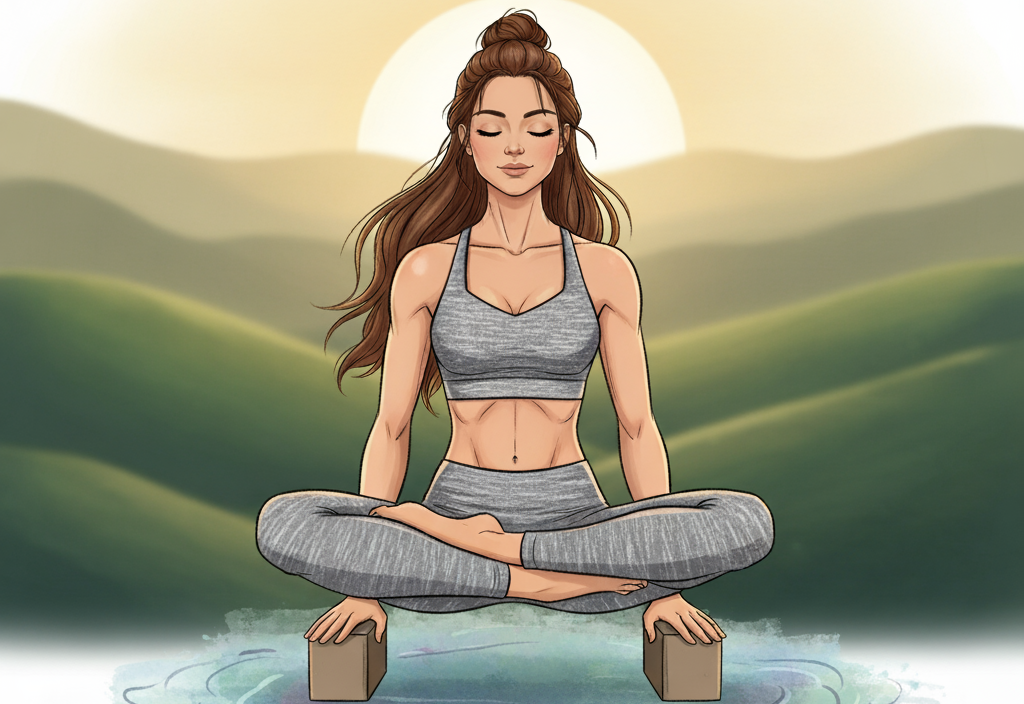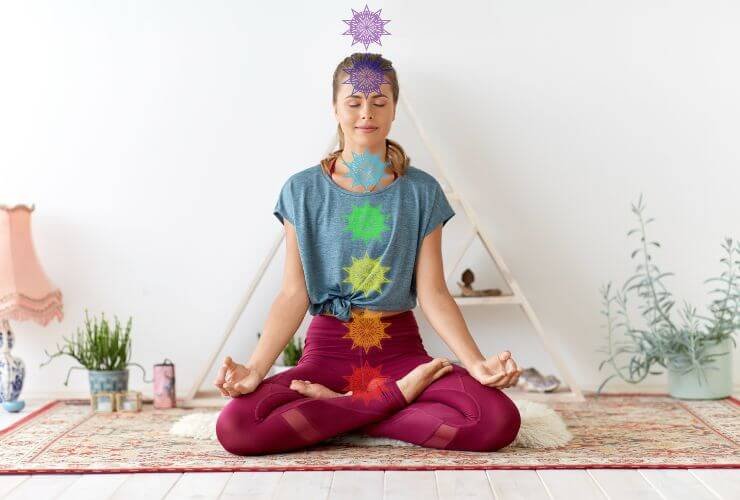Tolasana (often spelled Tulasana) is a lifted arm balance done from Padmasana (Lotus) in which you press into the hands and float the hips and legs off the floor, “weighing” yourself like a scale—hence the name. In some traditions, it’s also called Utthita Padmasana (Raised Lotus) or grouped with Utpluthih (a related lifted-Lotus hold in Ashtanga). The pose demands strong wrists, arms, and core, plus solid hip mobility for Lotus; many schools teach accessible variants in Sukhasana or Half-Lotus while you build toward the full expression.
How to Do Tolasana (Step by Step)
Seat & setup
Sit in Padmasana (Lotus). Place your palms on the floor beside (or slightly in front of) your hips; spread your fingers and root evenly through the whole hand. If your seat won’t clear the floor, put blocks under your hands.
Organize the lift
On an exhale, press firmly through the hands, brace the abdomen, and draw the inner groins up toward the spine. Keep your chest lifted and face soft.
Float
Continue pressing until your buttocks and legs lift away from the floor. Keep elbows straight without locking; gaze forward. Hold 10–15 seconds, breathing steadily.
Lower & switch
Exhale to lower with control. Uncross/re-cross the Lotus (swap the top leg) and repeat.
Not in Lotus yet? Try Sukhasana (Easy Seat) or Half-Lotus with hands on blocks to feel the action and build strength. You can even practice a chair variation by lifting from the seat while your legs are crossed.
Benefits (what practitioners commonly experience)
- Strengthens wrists, arms, and abdomen; the sustained press builds triceps, shoulder girdle control, and core.
- Hip mobility awareness from the Lotus component, with scalable options (Sukhasana/Half-Lotus) while you develop range.
- Many teachers note the pose can focus the mind and energize practice; some traditions mention digestive stimulation—treat these as traditional claims.
Anatomy: What’s Working
- Shoulder girdle & arms: The lift relies on scapular depression (lower trapezius, latissimus) and protraction/stability from serratus anterior as you “push the floor away.” Elbows extend via triceps; co-contraction of forearm flexors/extensors stabilizes the wrists. These same actions underpin safe, strong arm balances.
- Core: Rectus abdominis and obliques create a subtle abdominal “brace,” drawing the front body up to help unweight the pelvis and legs. Cueing a gentle navel back/up assists the float.
- Hips & knees: Lotus places the hips in flexion + external rotation; knees are flexed and must not be twisted to “force” the shape. If Lotus isn’t comfortable, use Half-Lotus or Easy Seat versions.
Preparatory Poses & Drills
- For Lotus readiness (hips): Baddha Konasana, Janu Sirsasana, Virasana, Ardha Matsyendrasana, and, of course, Padmasana practice itself.
- For pressing strength & wrist tolerance: Plank/Chaturanga variations and scapular-stability work (protracted plank) to wake up serratus anterior.
- Specific Tolasana preps: Progressive openers and block drills designed to “teach” the lift into Scales Pose.
- Props: Practice with blocks (longer arms = easier clearance); chair lifts develop the pattern with less load.
Contraindications & Cautions
- Wrist or shoulder injuries: Avoid or heavily modify (blocks, shorter holds, or skip) until symptom-free.
- Padmasana-related concerns: Because Tolasana inherits Lotus stresses, be cautious (or skip) with ankle/knee injuries or very tight hips/thighs. Do accessible variants instead.
- Other cautions sometimes cited: high blood pressure, recent abdominal surgery/hernia, pregnancy, or menstruation—practice only with individualized guidance and choose gentler alternatives.
Red flags: Sharp knee/ankle pain in Lotus, wrist numbness/tingling, or shoulder pinching—come out immediately and regress.
Coaching Cues (to make it work)
- Hands down, shoulders down: Press evenly through the whole hand; depress and stabilize the shoulder blades—don’t hang in the joints.
- Lift from center: On exhale, brace the abdomen and feel the inner groins draw toward the spine; then float.
- Scale it: Use Sukhasana/Half-Lotus or blocks until the full lift is available—same pose mechanics, less risk.
Variations
- Sukhasana/Chair Scales for patterning without Lotus.
- Half-Lotus Scales if full Lotus irritates the knees.
- Blocks under hands to increase arm length and clearance.
Closing Notes
Tolasana is simple in shape, exacting in execution. Build Lotus mobility, serratus-driven shoulder stability, and pressing strength before you chase height. If the full pose isn’t available, the variants still deliver the goods—and keep your joints happy.
This guide is informational and not medical advice. Modify for your body and consult a qualified teacher when in doubt.





